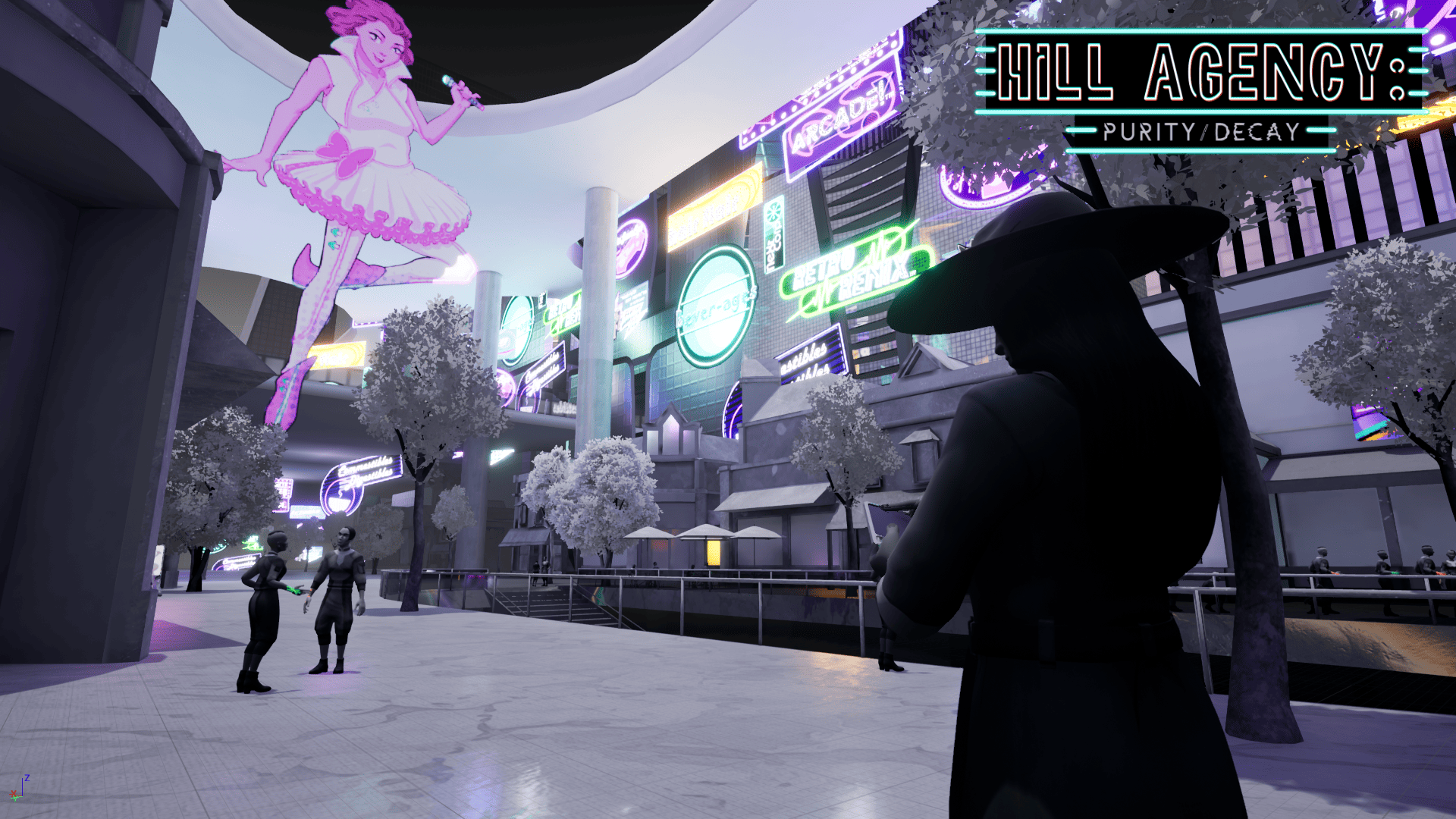Achimostawinan Games is an Indigenous-owned independent studio and the Grand Prize winners of the 2022 Ubisoft Indie Series presented by National Bank. Their name “Achimostawinan” is a Cree word that means “tell us a story,” and that’s exactly what they aim to do. The Hamilton-based studio prioritizes Indigenous representation in the narratives that they weave, bringing to life a rich worlds that captivate players and leave a lasting impression.
Their recent release Hill Agency: PURITY/decay is an Indigenous cybernoir detective mystery game where players embody a tough private investigator, solving crimes of all sizes across the diverse and futuristic landscapes of North America.
We chat with Founder Meagan Byrne and Lead Artist Sa’dekaronhes Esquivel to delve deep into the story of Achimostawinan Games, and learn about their values and the inspiration behind Hill Agency.
Can you tell us about your journey into game development?
Sa’dekaronhes (Sade) Esquivel: I got started as an EMT on a tribal reservation, but switched to art school after two years. Financial difficulties led me to drop out, but a friend with connections helped me get a job at Zombie Studios in Seattle. I impressed the producer with a ballpoint pen drawing of his office and got hired on the spot. After that studio closed, I worked with special ed students before meeting Meagan, who offered me the opportunity to work on a cybernoir detective game, which I immediately accepted. I have been with the studio ever since.
Meagan Byrne: I started off as a set and lighting designer in live production and theater. When the studio I worked for laid off many people, I moved from contract to contract for a few years. Wanting a more stable career, I enrolled in Sheridan College’s game development program. Though it was a technical and financial challenge, I found direction in the guidance and praise from my professors and clinching a student award lightened the financial load. After working in gamification research, I made my own games and worked on a game jam with DMG. I eventually went back to event planning while working on my games.
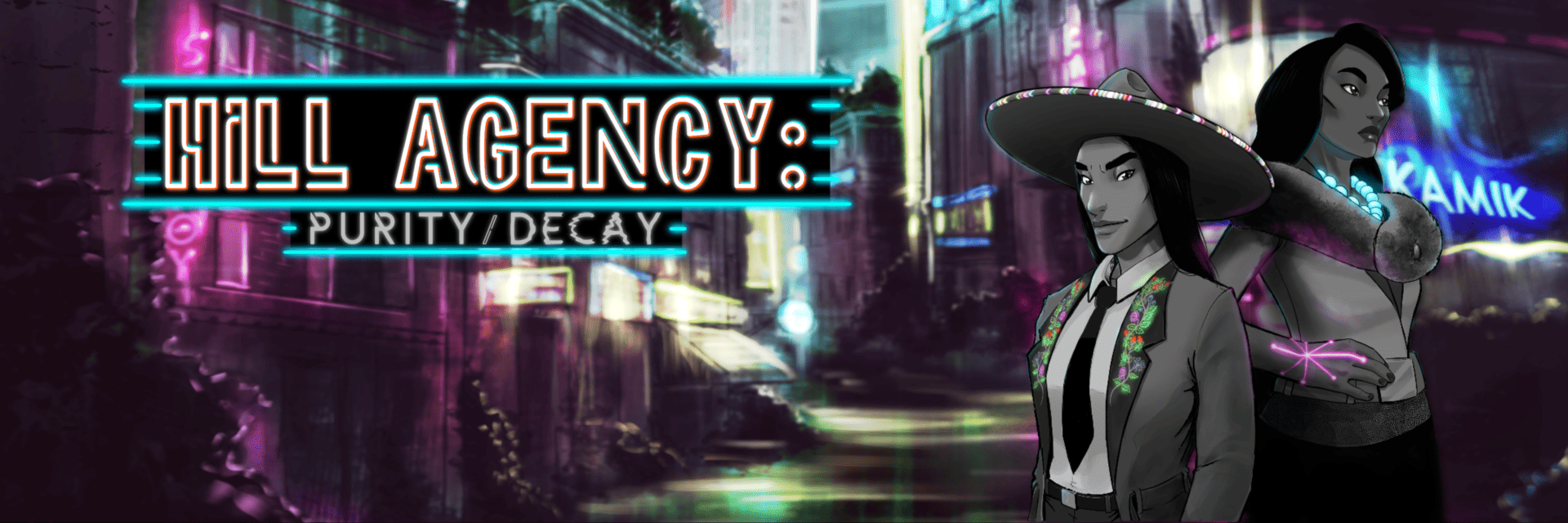
What does diversity mean to you and your studio? How does this impact Hill Agency?
MB: During the development of our game, it was really important for us to have as many Indigenous people as possible in key positions, and even in some non-key positions, to have their voices and perspectives reflected in the game.
Sade was our creative partner, who has been with us since the beginning. We worked with two amazing Indigenous interns who came to us through a fund provided by the Georgian Bay Native Friendship Center. One of them, Paul Desjardins, provided a lot of the audio, and Jasmine Khan, our other intern, was our set decorator who brought the in-game spaces to life. We had a lot of conversations around what public housing would look like for refugees and immigrants when it’s being created by Indigenous people. We wanted to make it comfortable for them, so there’s not as much nature in those areas as there are in the Indigenous neighborhoods. Maritza Louis, who is West Coast Syilx, did the 3D models from Sade’s design of nearly all the Indigenous characters.
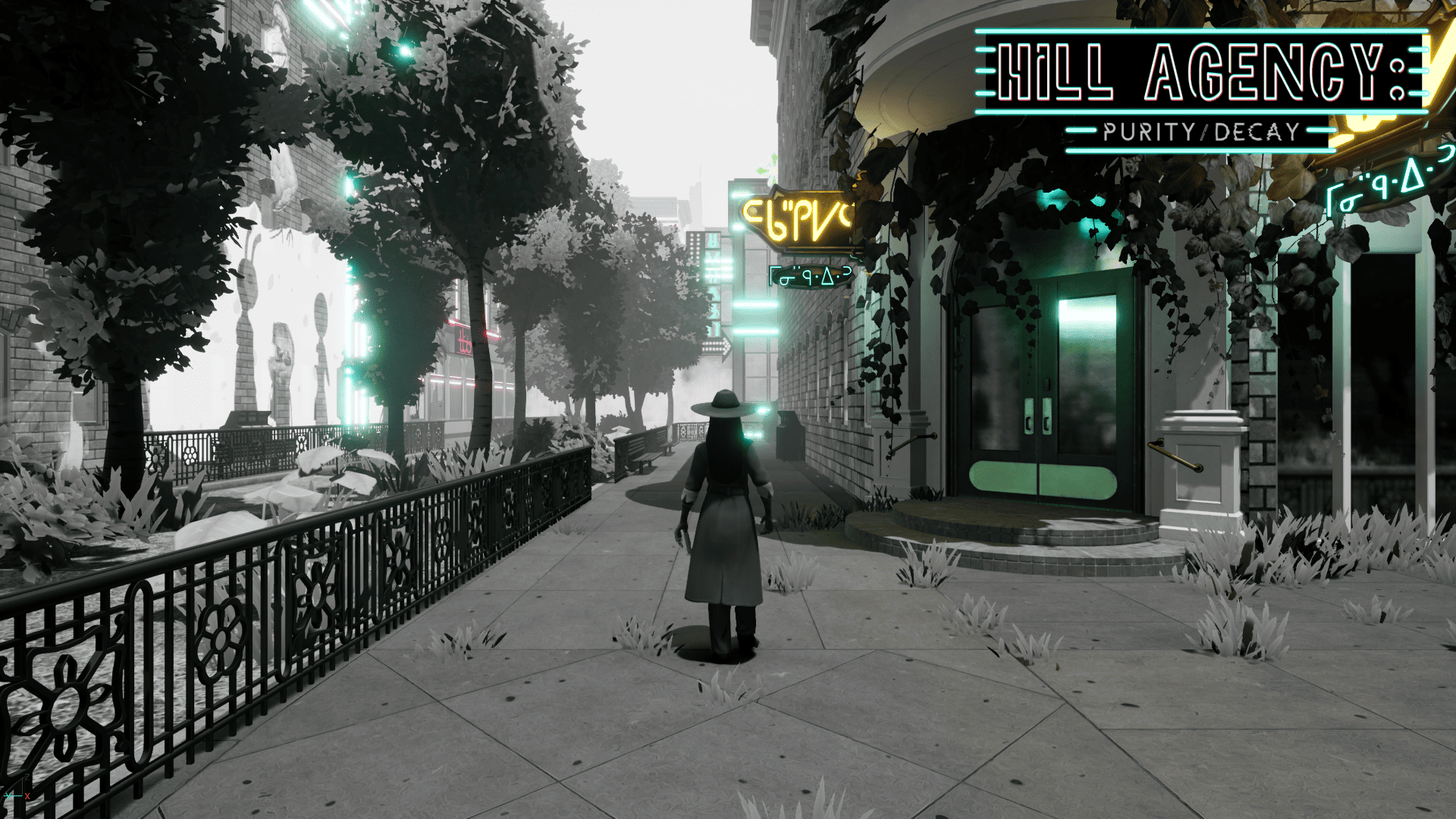
SE: Indigenous representation in media is often stereotypical, especially when created by non-native individuals. Our focus is on exploring the past and imagining the future. We use the noir aesthetics in Hill Agency as a touchstone to our ancestors. We imagine a future where Indigenous people rebuild society on our own terms. Hill Agency is a reflection of our story and our future, and we are proud to be a part of it.
MB: While interest has since grown in Indigenous media, it was difficult to get over that initial hurdle of getting people to buy into the game. Some publishers weren’t interested in an Indigenous market, but that’s okay because I’m making this game for Indigenous people. We need new stories and shouldn’t be afraid that our audience won’t understand. Fan communities exist to help with that.
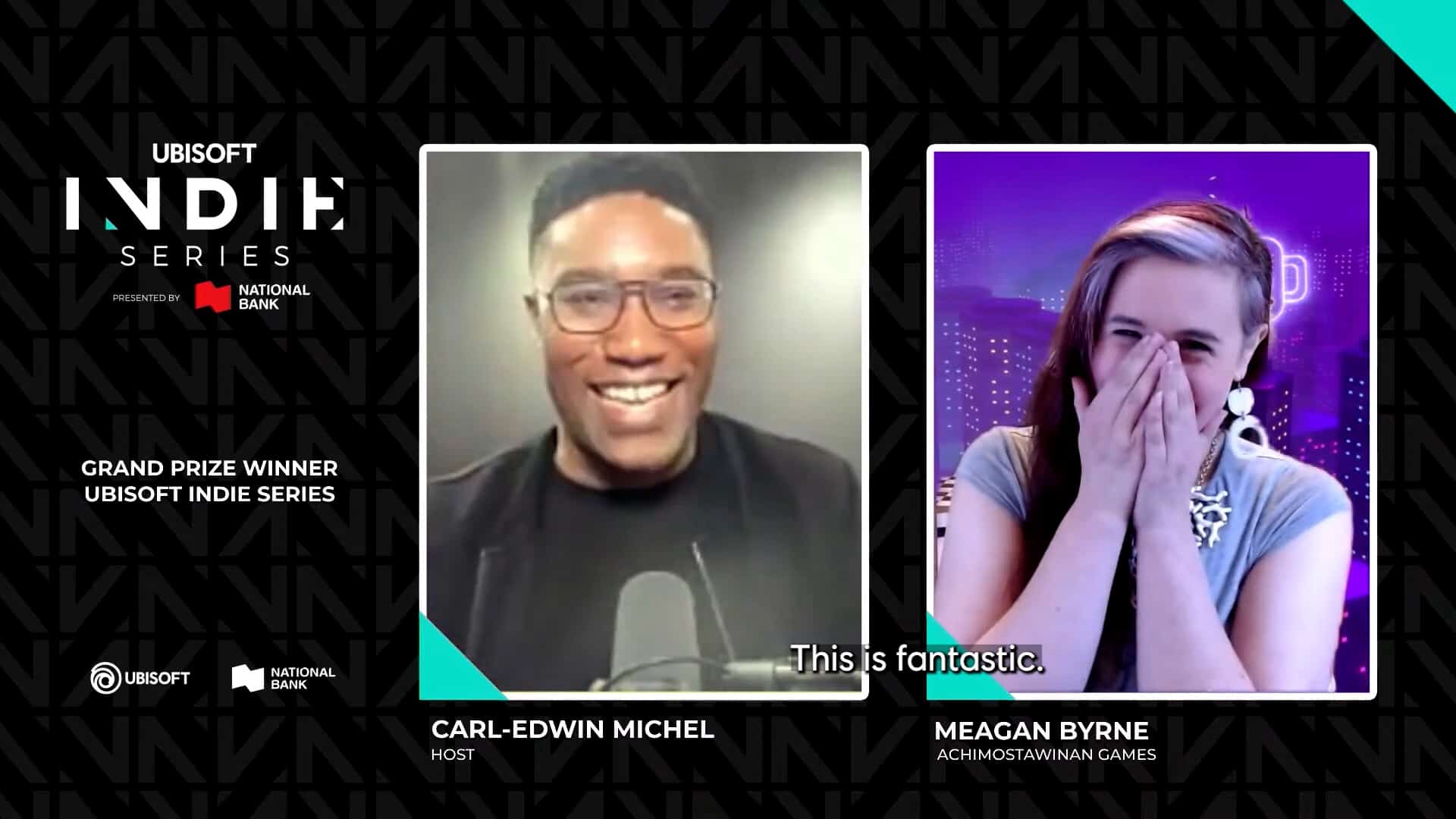
As the Ubisoft Indie Series Grand Prize winner in 2022 and a finalist in 2019, how has the Indie Series supported your studio and the game’s development?
SE: As a game developer, I’ve often felt like a background player on different projects. But this game was different; it gave us a chance to showcase our skills and vision. The Indie Series win catapulted us out of the sea of indie devs and gave us a platform to talk about our culture and our game. It was validating for us as Indigenous people who often feel unseen in mainstream culture. We’re seeing a resurgence of interest in our stories lately, and we owe a lot to Indie Series for the opportunity it provided.
MB: One of the biggest things about this win was that we were able to keep Sade on the project. Sade is such a big voice, and I can’t imagine not having him here. He brings so much to the table and has really helped shape the game into what it is now.
What are your hopes for the future of the video game industry?
SE: Games are a great medium for storytelling through interactive experiences. It’s important for more people to join in, not just at big studios but also in small communities. I’d like to see more Indigenous communities and nations building capacity to create their own studios and projects that are fun and engaging, not just educational. There is a large underserved market in marginalized groups, and I hope to see more inclusive spaces in the industry.
MB: As someone who has seen the evolution of the film and book industry in terms of Indigenous representation, I truly hope that the gaming industry follows the same path. It’s wonderful to see the vast amount of content available for gamers nowadays, and the fact that one can easily find niche games that cater to their interests is a huge win for the industry. However, it’s important that the gaming industry embraces this change rather than fearing it. Just like the film and book industry, there should be no fear of losing out on audiences. The industry can only benefit from a more diverse and inclusive gaming community. It’s a small but significant step towards creating a more equitable gaming community.
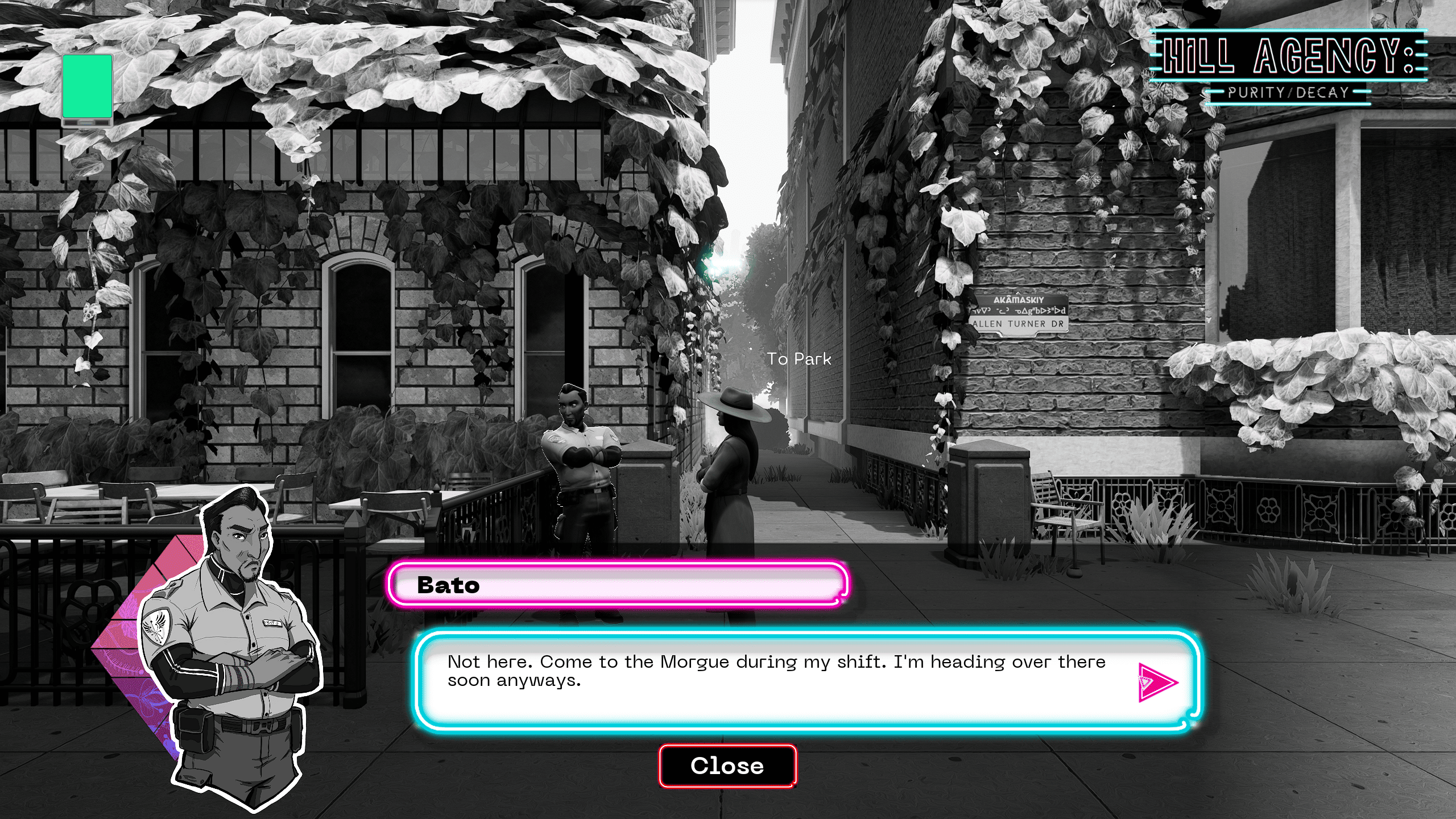
What is it about games as a medium that allows for the better or stronger telling of Indigenous stories?
MB: I believe that theater and games are the best media forms to tell our stories. Our stories are traditionally verbal and performative, and I remember them being very much tied to the pace of the action being done. If people weren’t getting it, the storyteller would slow down and explain or draw it out, weaving in new information until the audience understood.
In Indigenous storytelling, we use a technique called “the returning,” or “Biskaabiiyaang.” It’s difficult to describe, but essentially it involves hitting a point where you’re not ready to go forward, so you go off and come back around when you have enough knowledge to continue. This happens multiple times, and the end is not the end, but rather the middle. You return and go through the same things again, except now you’re a different person and the problems are new. This is similar to how video games work, especially 3D adventure games like “Zelda,” where every time you come back with new knowledge, you realize there’s a space you can get to that you didn’t even know existed because you didn’t have the information before.
Because of this, games are the perfect medium for North American Indigenous storytelling, especially under the Anishinaabe culture. Sade and I both fall under the Anishinaabe mother language, but we also have differences. One example is how we rest our hand drums, which can cause fights. Nevertheless, I believe that games and theater can tell our stories in a way that is true to our culture and traditions.
What advice do you have for other Indigenous game developers?
MB: My advice is to stick to your guns and not let funders compromise it. Don’t hustle at the expense of your intellectual property. Treat your project like your child and work to maintain its integrity, even if that means finding funding elsewhere. If your project holds a deeper meaning to you, treat it with respect. This approach made us difficult to work with for some, but the right partners understood and supported our vision.
Want to learn more about Ubisoft Indie Series? Click here. And follow us on Twitter, LinkedIn, and Instagram for updates!
